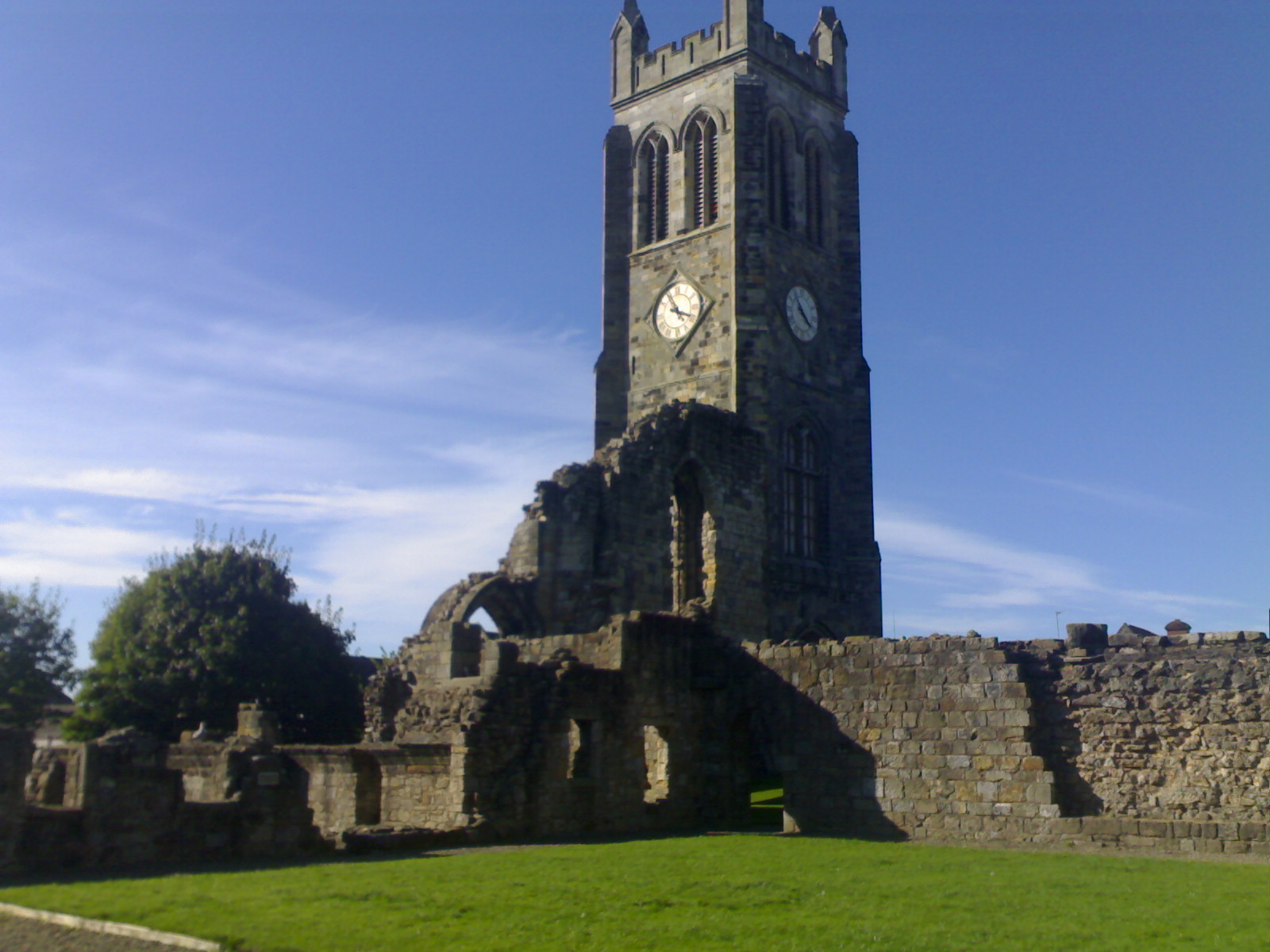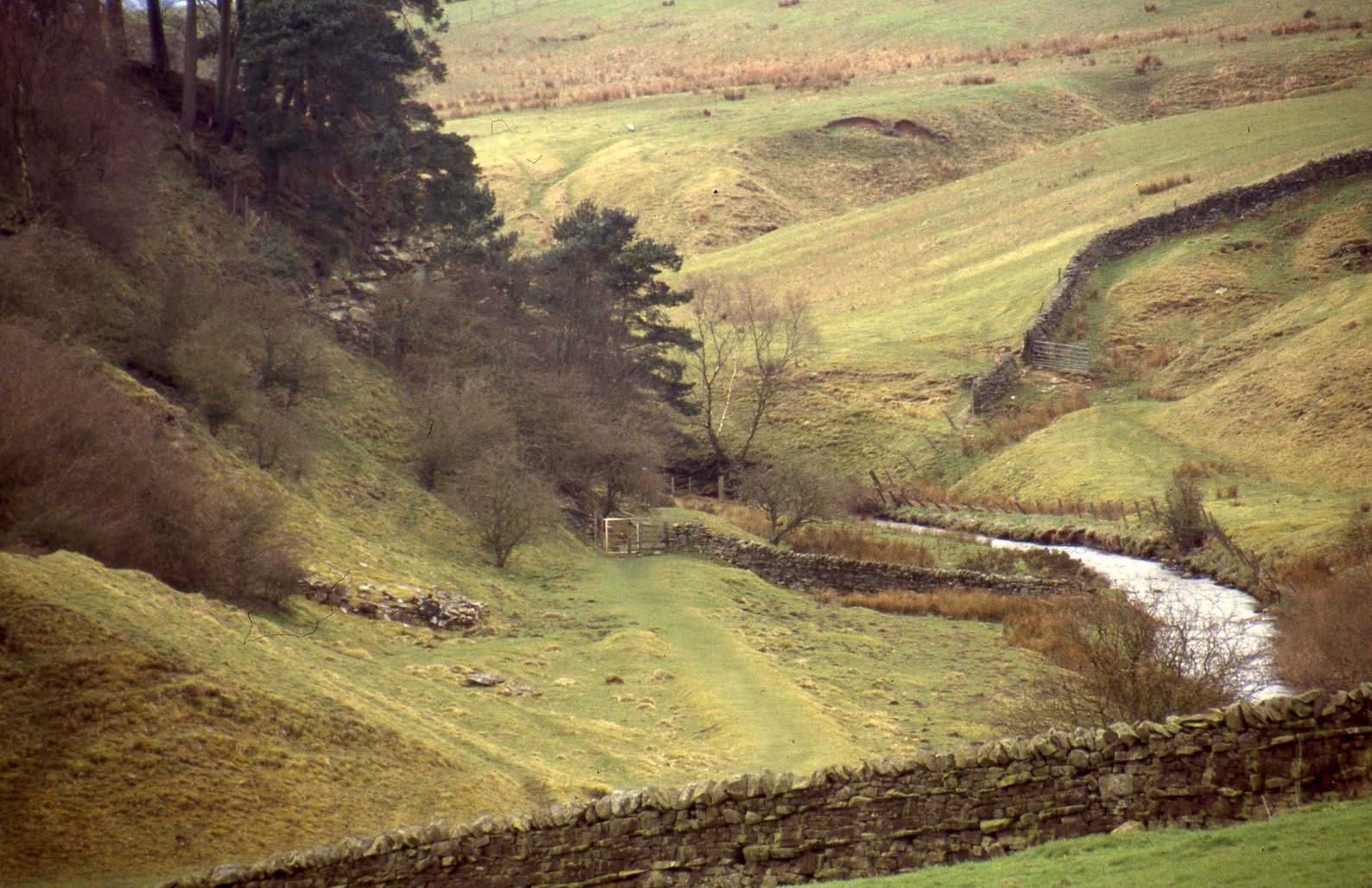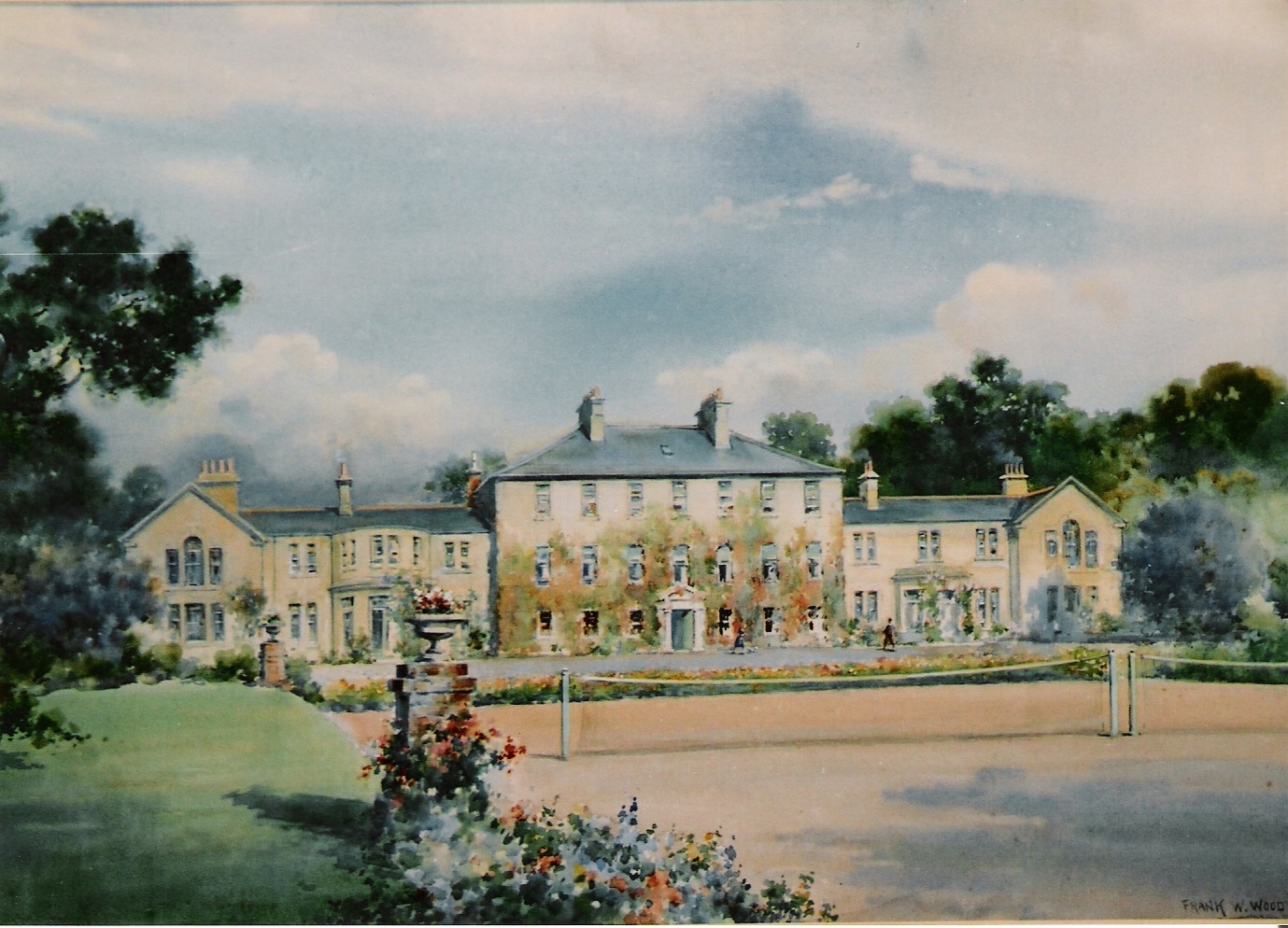|
Bernard Of Arbroath
Bernard (died c. 1331) was a Tironensian abbot, administrator and bishop active in late 13th- and early 14th-century Scotland, during the First War of Scottish Independence. He first appears in the records already established as Abbot of Kilwinning in 1296, disappearing for a decade before re-emerging as Chancellor of Scotland then Abbot of Arbroath. A senior figure in the administration of Scotland during the 1310s and 1320s, he is widely said by modern writers to have drafted the Declaration of Arbroath, and although there is no direct evidence for this, he nevertheless probably played a role. By early 1328, his service to the king had earned him a bishopric – the bishopric of the Isles – a position he held for three or four years before his death in 1331. Abbot of Kilwinning The name "Bernard abbe de Kilwynin" (abbot of Kilwinning) occurs on the Ragman Rolls, 28 August 1296, and he is recorded again in a document of Melrose Abbey on 25 December.Watt & Shead, ''H ... [...More Info...] [...Related Items...] OR: [Wikipedia] [Google] [Baidu] |
Bishop Of The Isles
The Bishop of the Isles or Bishop of Sodor was the ecclesiastical head of the Diocese of the Isles (or Sodor), one of Scotland's thirteen medieval bishoprics. The bishopric, encompassing both the Hebrides and Mann, probably traces its origins as an ecclesiastical unity to the careers of Olaf, King of the Isles, and Bishop Wimund. Previously, there had been numerous bishoprics, and recorded bishoprics include Kingarth, Iona, Skye and Mann. There were very likely numerous others. List of precursor bishoprics List of known bishops of Iona List of known bishops of Cenn Garad Kingarth was a church on the Isle of Bute, supposedly founded by Saint Chattan and Saint Blane. Three abbots are known, but only two bishops. Sadly, little is known about the abbey, bishopric and individual clerics. List of known bishops of Mann Bishops of the Isles List of known bishops of Isles (including Mann) The list of bishops known to have ruled the whole of what became the Diocese of the Isles (S ... [...More Info...] [...Related Items...] OR: [Wikipedia] [Google] [Baidu] |
Melrose Abbey
St Mary's Abbey, Melrose is a partly ruined monastery of the Cistercian order in Melrose, Roxburghshire, in the Scottish Borders. It was founded in 1136 by Cistercian monks at the request of King David I of Scotland and was the chief house of that order in the country until the Reformation. It was headed by the abbot or commendator of Melrose. Today the abbey is maintained by Historic Environment Scotland as a scheduled monument. The east end of the abbey was completed in 1146. Other buildings in the complex were added over the next 50 years. The abbey was built in the Gothic manner and in the form of a St. John's Cross. A considerable portion of the abbey is now in ruins. A structure dating from 1590 is maintained as a museum open to the public. Alexander II and other Scottish kings and nobles are buried at the abbey. A lead container believed to hold the embalmed heart of Robert the Bruce was found in 1921 below the Chapter House site; it was found again in a 1998 excavat ... [...More Info...] [...Related Items...] OR: [Wikipedia] [Google] [Baidu] |
Tynedale
__NOTOC__ Tynedale is an area and former local government district in south-west Northumberland, England. The district had a resident population of 58,808 according to the 2001 Census. Its main towns were Hexham, Haltwhistle and Prudhoe. The district contained part of Hadrian's Wall and the southern part of Northumberland National Park. With an area of it was the second largest English district, after the East Riding of Yorkshire. It was bigger than several English counties, including Nottinghamshire, Leicestershire, and Hertfordshire. It was also the second-least densely populated district (behind Eden, Cumbria). The district was formed on 1 April 1974, under the Local Government Act 1972, and was a merger of Hexham and Prudhoe urban districts, along with Bellingham, Haltwhistle and Hexham Rural Districts. Tynedale was historically a liberty created alongside the county of Hexhamshire by Henry I of England. The district was abolished as part of the 2009 structural change ... [...More Info...] [...Related Items...] OR: [Wikipedia] [Google] [Baidu] |
Rector (ecclesiastical)
A rector is, in an ecclesiastical sense, a cleric who functions as an administrative leader in some Christian denominations. In contrast, a vicar is also a cleric but functions as an assistant and representative of an administrative leader. Ancient usage In ancient times bishops, as rulers of cities and provinces, especially in the Papal States, were called rectors, as were administrators of the patrimony of the Church (e.g. '). The Latin term ' was used by Pope Gregory I in ''Regula Pastoralis'' as equivalent to the Latin term ' (shepherd). Roman Catholic Church In the Roman Catholic Church, a rector is a person who holds the ''office'' of presiding over an ecclesiastical institution. The institution may be a particular building—such as a church (called his rectory church) or shrine—or it may be an organization, such as a parish, a mission or quasi-parish, a seminary or house of studies, a university, a hospital, or a community of clerics or religious. If a r ... [...More Info...] [...Related Items...] OR: [Wikipedia] [Google] [Baidu] |
Haltwhistle
Haltwhistle is a market town and civil parish in Northumberland, England, east of Brampton. It had a population of 3,811 at the 2011 Census. Stone-built houses are a feature of Haltwhistle. It is one of two settlements in Great Britain which claim to be the exact geographic centre of the island, along with Dunsop Bridge in Lancashire, to the south. This is the closest community to Hadrian's Wall and to Northumberland National Park, both approximately two miles distant. The name The name Haltwhistle has nothing to do with a railway stop. Early forms of the name are Hautwesel (1240), Hautwysel (1254), Hawtewysill (1279), Hautwysell (1381), Haltwesell (Speede 1610). The second part -twistle relates to two streams or rivers. It derives from two Old English words ''twicce'' or ''twise'', 'twice', 'division into two' and ''wella'', 'stream, brook'. The second word is reduced in the compound word to ''ull'', making ''twicculla'', ''twisella''. All but one of the examples in place na ... [...More Info...] [...Related Items...] OR: [Wikipedia] [Google] [Baidu] |
Bishop Of St Andrews
The Bishop of St. Andrews ( gd, Easbaig Chill Rìmhinn, sco, Beeshop o Saunt Andras) was the ecclesiastical head of the Diocese of St Andrews in the Catholic Church and then, from 14 August 1472, as Archbishop of St Andrews ( gd, Àrd-easbaig Chill Rìmhinn), the Archdiocese of St Andrews. The name St Andrews is not the town or church's original name. Originally it was ''Cellrígmonaid'' ("church of the king's mounth" hence ''Cill Rìmhinn'') located at ''Cennrígmonaid'' ("head of the king's mounth"); hence the town became ''Kilrymont'' (i.e. ''Cellrígmonaid'') in the non-Gaelic orthography of the High Middle Ages. Today St Andrews has replaced both Kilrymont (and variants) as well as the older English term Anderston as the name of the town and bishopric. The bishopric itself appears to originate in the period 700–900. By the 11th century, it is clear that it was the most important bishopric in Scotland. List of known abbots There had been a monastery there since the 8th ... [...More Info...] [...Related Items...] OR: [Wikipedia] [Google] [Baidu] |
Angus, Scotland
Angus ( sco, Angus; gd, Aonghas) is one of the 32 local government council areas of Scotland, a registration county and a lieutenancy area. The council area borders Aberdeenshire, Dundee City and Perth and Kinross. Main industries include agriculture and fishing. Global pharmaceuticals company GSK has a significant presence in Montrose in the north of the county. Angus was historically a province, and later a sheriffdom and county (known officially as Forfarshire from the 18th century until 1928), bordering Kincardineshire to the north-east, Aberdeenshire to the north and Perthshire to the west; southwards it faced Fife across the Firth of Tay; these remain the borders of Angus, minus Dundee which now forms its own small separate council area. Angus remains a registration county and a lieutenancy area. In 1975 some of its administrative functions were transferred to the council district of the Tayside Region, and in 1995 further reform resulted in the establishment of the un ... [...More Info...] [...Related Items...] OR: [Wikipedia] [Google] [Baidu] |
King Of The Scots
The monarch of Scotland was the head of state of the Kingdom of Scotland. According to tradition, the first King of Scots was Kenneth I MacAlpin (), who founded the state in 843. Historically, the Kingdom of Scotland is thought to have grown out of an earlier "Kingdom of the Picts" (and later the Kingdom of Strathclyde that was conquered in the 11th century, becoming part of the new Kingdom of Scotland) though in reality the distinction is a product of later medieval myth and confusion from a change in nomenclature i.e. ('King of the Picts') becomes (King of Alba) under Donald II when annals switched from Latin to vernacular around the end of the 9th century, by which time the word in Scottish Gaelic had come to refer to the Kingdom of the Picts rather than Britain (its older meaning). The Kingdom of the Picts just became known as the Kingdom of Alba in Scottish Gaelic, which later became known in Scots and English as ''Scotland''; the terms are retained in both languages ... [...More Info...] [...Related Items...] OR: [Wikipedia] [Google] [Baidu] |
Robert I Of Scotland
Robert I (11 July 1274 – 7 June 1329), popularly known as Robert the Bruce (Scottish Gaelic: ''Raibeart an Bruis''), was King of Scots from 1306 to his death in 1329. One of the most renowned warriors of his generation, Robert eventually led Scotland during the First War of Scottish Independence against England. He fought successfully during his reign to regain Scotland's place as an independent kingdom and is now revered in Scotland as a national hero. Robert was a fourth great-grandson of King David I, and his grandfather, Robert de Brus, 5th Lord of Annandale, was one of the claimants to the Scottish throne during the "Great Cause". As Earl of Carrick, Robert the Bruce supported his family's claim to the Scottish throne and took part in William Wallace's revolt against Edward I of England. Appointed in 1298 as a Guardian of Scotland alongside his chief rival for the throne, John Comyn of Badenoch, and William Lamberton, Bishop of St Andrews, Robert resigned in 1300 ... [...More Info...] [...Related Items...] OR: [Wikipedia] [Google] [Baidu] |
Arbroath Abbey1
Arbroath () or Aberbrothock ( gd, Obar Bhrothaig ) is a former royal burgh and the largest town in the Subdivisions of Scotland, council area of Angus, Scotland, Angus, Scotland, with a population of 23,902. It lies on the North Sea coast some ENE of Dundee, Scotland, Dundee and SSW of Aberdeen, Scotland, Aberdeen. There is evidence of Iron Age settlement, but its history as a town began with the founding of Arbroath Abbey in 1178. It grew much during the Industrial Revolution through the flax and then the jute industry and the engineering sector. A new harbour created in 1839; by the 20th century, Arbroath was one of Scotland's larger fishing ports. It is notable for the Declaration of Arbroath and the Arbroath smokie. Arbroath F.C., Arbroath Football Club holds the world record for the number of goals scored in a professional association football, football match: Arbroath 36–0 Bon Accord, 36–0 against Bon Accord F.C., Bon Accord of Aberdeen in the Scottish Cup in 1885� ... [...More Info...] [...Related Items...] OR: [Wikipedia] [Google] [Baidu] |
Mordington
Mordington is an agricultural parish in the extreme south-east of Berwickshire in the Scottish Borders region. It is five miles from Berwick-upon-Tweed and borders Northumberland to the east, and south (where the boundary is the Whiteadder Water), Foulden to the west, and Lamberton to the north. The parish is bisected by the A6105 Berwick to Duns road. The lower part of the parish is covered by the Edrington estate. It is possibly the warmest parish in Scotland; the annual hours of sunshine are said to be almost as high as at Dunbar, which records the most hours in Scotland. Origins It is said that there was once a Saxon village, dating from the 11th century, in the northern part of the parish but this has long vanished. Originally claimed by Coldingham Priory, the larger part of the parish eventually came into the possession of the de Mordington family who appear to have failed in the male line. Sir Peter de Mordington, knight, son of the deceased Sir William de Mordington ... [...More Info...] [...Related Items...] OR: [Wikipedia] [Google] [Baidu] |
Parson
A parson is an ordained Christian person responsible for a small area, typically a parish. The term was formerly often used for some Anglican clergy and, more rarely, for ordained ministers in some other churches. It is no longer a formal term denoting a specific position within Anglicanism, but has some continued historical and colloquial use. In the pre-Reformation church, a parson was the priest of an independent parish church, that is, a church not under the control of a larger ecclesiastical or monastic organization. The term is similar to rector and is in contrast to a vicar, a cleric whose revenue is usually, at least partially, appropriated by a larger organisation. Today the term is normally used for some parish clergy of non-Roman Catholic churches, in particular in the Anglican tradition in which a parson is the incumbent of a parochial benefice: a parish priest or a rector; in this sense a parson can be compared with a vicar. The title ''parson'' can be applied to cle ... [...More Info...] [...Related Items...] OR: [Wikipedia] [Google] [Baidu] |








